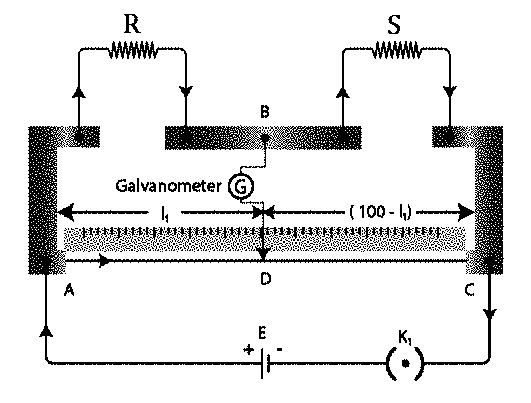B ) Determine the balance point of the bridge above if R and S are interchanged.
C ) What happens if the galvanometer and cell are interchanged at the balance point of the bridge? Would the galvanometer show any current?

Answer –
( a ) Let L 1 denote the balance point from end A ,
From the question statement, L 1 = 39.5 cm
Resistance of the resistor S = 12.5 Ω
Now, the condition for the balance is given by the equation –
![Rendered by QuickLaTeX.com \[\frac{R}{S}=\frac{100-{{L}_{1}}}{{{L}_{1}}}\]](https://www.learnatnoon.com/s/wp-content/ql-cache/quicklatex.com-079b04b596afdfc7907d29b1683702a0_l3.png)
![Rendered by QuickLaTeX.com \[\therefore R=\frac{100-{{L}_{1}}}{{{L}_{1}}}\times S=\frac{100-39.5}{39.5}\times 12.5\]](https://www.learnatnoon.com/s/wp-content/ql-cache/quicklatex.com-505e4e7ff1ed425dc1ed307a62510d51_l3.png)
![]()
(b) when R and S are interchanged, then the lengths also gets interchanged.
Hence, the length changes to
L = 100 – 39.5 = 60.5 cm
(c) The position of the balance point remains unchanged if the galvanometer and the cell are swapped. As a result, there will be no current on the galvanometer.
